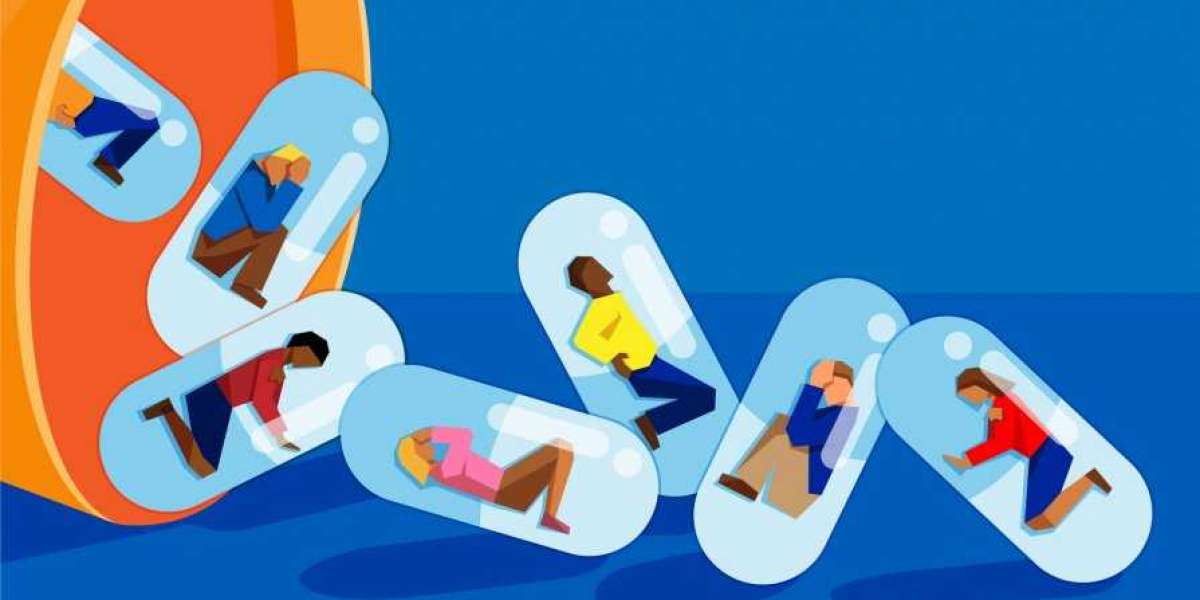Opioid use disorders are more common in younger people than in older people. This is likely due to biological differences, but addiction can affect anyone. People with trauma, mental illness, and family histories of addiction are also more likely to develop addictions. Patients with long-term injuries or illness can become dependent on opioids prescribed by their doctors. When they stop taking these medications, they experience withdrawal symptoms, which can lead to physical dependence.
Medication-assisted treatment for opioid addiction
Medication-assisted treatment (MAT) for opioid addiction helps patients transition out of opioid dependence by relieving withdrawal symptoms. Withdrawal symptoms, such as cravings and sickness, are often common for people who have been dependent on opioids for a long time. MAT relieves these symptoms, allowing patients to resume normal life activities. It is also safer than traditional methods of opioid addiction treatment, with fewer side effects and discomfort.
Medication-assisted treatment for opioid addicts aims to change the underlying behaviors that drive drug abuse. Treatments should encourage patients to follow prescribed medications, engage them in family therapy, and connect them with support networks. Moreover, patients should be offered rewards when they engage in behaviors that promote recovery.
Medication-assisted treatment for opioids is an effective treatment for many people who are addicted to opioids. Its effectiveness depends on the ability of the patient to function normally and maintain healthy relationships. If the medication causes unwanted side effects, the treatment team may need to modify the medication or revamp the entire program.
Patients enrolled in MAT will have to undergo a standardized screening process. They will be asked to complete a questionnaire to determine their eligibility for the program. It consists of twelve demographic questions and five questions related to opiate use history. It also includes questions about comorbid psychiatric disorders and HIV status.
Signs and symptoms
Opioid abuse is dangerous, and signs of addiction are difficult to spot, particularly in the early stages. Physical symptoms can include changes in mood and behavior. If you suspect that someone you love is abusing opioids, speak up. You may be able to save their life. You can spot signs of opioid abuse in your loved one by observing how they behave, think, and react.
When an individual is using opioids, their mood and behavior change significantly. In addition to a change in mood, the user will also experience withdrawal symptoms, which are similar to flu symptoms. In addition, the person may be unable to seek treatment. In addition to the physical symptoms, withdrawal may lead to legal problems, financial problems, and a breakdown in relationships. Friends and family members may begin to notice these changes in a loved one.
When someone is abusing opioids, they need to be kept out of reach of children. Many children mistake these medications for candy and may swallow them, which could lead to an overdose. They should also be stored away from other family members and visitors. People who abuse opioids often obtain them from family members and friends. Moreover, if they become pregnant, they can pass on the drug to their unborn baby.
Opioid use disorder is an illness with potentially fatal consequences. It affects people of all ages and genders, and can severely impact a person's social and work lives. Fortunately, there are treatments that can be done to treat this condition.
Treatment options
There are a variety of treatment options for opioid addiction. Some treatment options are inpatient, while others involve outpatient care. These options include counseling, medication, and support groups. Individuals can undergo psychotherapy to identify their triggers and learn new coping skills. Some programs even offer vocational training or community-based support.
During treatment, the addict may be prescribed medication to reduce cravings and withdrawal symptoms. These medications can help the addict get back to a normal, healthy life. They are not intended to replace addictive drugs, but rather help the patient manage the condition and maintain the benefits of recovery. Treatment programs can also be effective in addressing the underlying causes of addiction.
Some rehabilitation centers also offer residential treatment programs. Inpatient programs offer round-the-clock medical supervision. They are ideal for individuals who are just beginning the recovery process. Nurses and doctors monitor daily activities and administer medications. Inpatient programs can last from a few weeks to several months. Their duration depends on the severity of the addict's addiction.
Detoxification is the first step in opioid treatment. This involves administering medications under medical supervision in order to prevent the painful and dangerous symptoms of withdrawal. In addition, medication-assisted treatment reduces the chances of relapse and increases chances of success. These programs can also include counseling and behavioral support.








